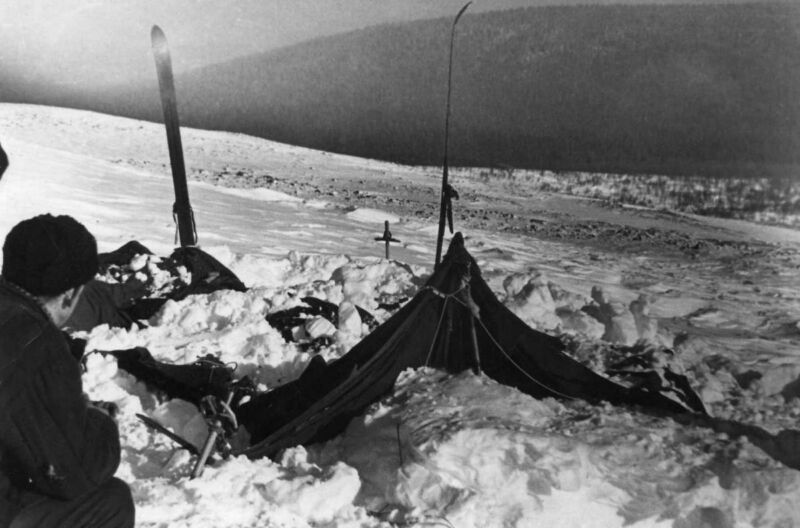
Enlarge / A view of the tent as the rescuers found it on February 26, 1959. The tent had been cut open from inside, and most of the skiers had fled in socks or barefoot. (credit: Public Domain)
In February 1959, nine young Russian hikers perished during a cross-country skiing trek through the northern Ural Mountains. All were very experienced, so investigators were mystified about why the hikers had cut their way out of their tent in the middle of the night and fled into the wilderness to their deaths. Last year, two scientists published their hypothesis that the group had been surprised by a sudden slab avalanche. Now, those scientists are back to address the concerns of their critics in a recent paper published in the journal Communications Earth & Environment.
The “Dyatlov Pass incident,” as it came to be known, takes its name from the 23-year-old radio engineering student who organized the expedition, Igor Dyatlov. (A mountain pass near the site was named Dyatlov Pass as a memorial.) He and his fellow travelers—seven men and two women—were students at the Ural Polytechnical Institute, since renamed Ural Federal University. One member, Yuri Yudin, turned back on January 27 because his rheumatism had flared up, and the knee and joint pain was too severe to continue. He was the only one of the original 10 who survived.
According to diaries and cameras retrieved from the ill-fated campsite, the hikers began to move through the pass on the morning of February 1. Their goal was to set up camp for the night on the other side. But they lost their bearing because of snowstorms and poor visibility and ended up further west, on the eastern slope of Kholat Syakhl. Rather than backtracking to set up camp in a forested area just under a mile (about 1.5 kilometers) down, the team opted to dig a cut into the slope and pitch their tents there for the night. (Yudin speculated that Dyatlov, the team leader, likely didn’t want to lose the altitude they had gained during the day.)





